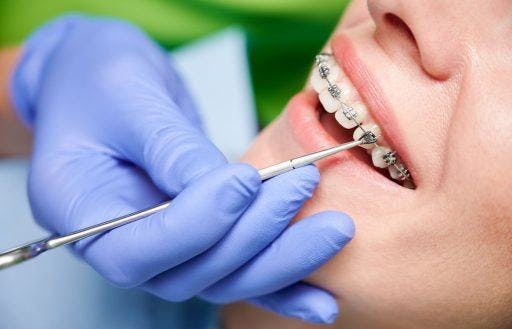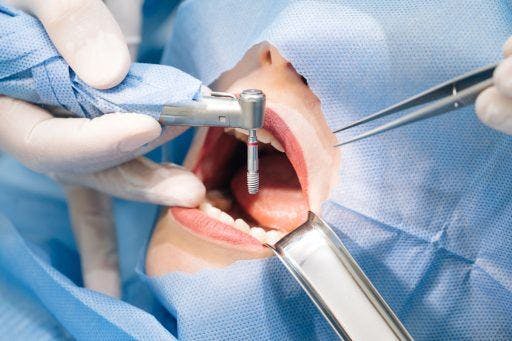Maintaining the health of your teeth is just as crucial as taking care of your overall wellbeing. Ignoring dental issues can lead to serious conditions in the long run. So, like with your body, you need to seek the expertise of a skilled practitioner for your dental concerns. In dentistry, you can consult various types of oral healthcare providers. You may already have a trusted dentist, but do you know when to go to an orthodontist instead? What about a dental surgeon?
Each provider specialises in a specific area to help you achieve optimal oral health. Learn more about their distinct roles here.
The Dentist

Dentists are the primary oral care practitioners people commonly visit to have their teeth checked. Think of them as experts in general dentistry. They provide comprehensive treatment for various issues, restoring teeth to their intended function and appearance.
How do you differentiate a dental hygienist vs. a dentist? Dentists play a crucial role in maintaining oral health by conducting routine checkups and teeth cleanings. Hygienists assist in these procedures.
Besides preventing and managing dental problems, dentists also offer a range of services, including:
- Performing thorough examinations, including scans and X-rays.
- Treating tooth decay or cavities with fillings.
- Managing gum inflammation or gum disease.
- Creating crowns and veneers.
- Performing root canal treatments.
- Providing teeth whitening treatments.
- Conducting full-mouth rehabilitation.
- Examining and treating kids.
- Educating parents and guardians to improve children’s overall oral health.
- Performing simple tooth extraction.
The Orthodontist

Orthodontists are dental professionals who specialise in nonsurgical treatments for patients with teeth alignment and bite issues. They can prescribe and manage orthodontic appliances, like metal braces and ClearCorrect aligners, which safely move teeth and jaws into their proper positions.
Orthodontists and dentists typically work together to ensure optimal oral health. But the former has undergone additional education and training to manage malocclusions. Thus, the main difference between an orthodontist vs. a dentist is their range of services.
Here’s a list of what orthodontists offer:
- Identifying and diagnosing problems related to malocclusions and bite issues.
- Treating crowding, misalignment of teeth, or jaw irregularities.
- Creating a customised orthodontic treatment plan based on a patient’s dental needs.
- Installing braces, aligners, retainers, and other orthodontic devices.
- Performing teeth straightening surgery.
- Detecting and addressing dental disorders in children.
The Dental Surgeon

Dental surgeons, a.k.a. maxillofacial surgeons, are oral healthcare providers specialising in advanced and complex procedures. They have training and education in oral surgery, allowing them to perform processes involving tooth extractions and dental implants. Their expertise also encompasses various dental and medical conditions affecting the face, mouth, and jaw.
Dental surgeons can provide any of these services:
- Performing wisdom tooth extraction.
- Replacing missing teeth with dental implants.
- Treating temporomandibular disorder treatment (TMJ).
- Conducting oral-facial trauma surgery and treating fractured facial bones and soft tissues in the teeth and jaws.
- Reconstructing facial structures.
- Performing bone grafting.
- Diagnosing and managing oral diseases, including cancer.
Four Steps to Choosing the Right Dental Care Provider

Searching for a dental care provider to help manage your oral health? Follow these four easy steps to help you narrow down your options.
Step 1: Start with the basics.
When looking for a dental care provider, here are the initial things to ask:
- Which professionals, treatments, and procedures do your insurance cover?
- Which clinics are accessible to your home or office?
- Which days and time slots are you free?
Step 2: Launch your search.
Now that you have a set of criteria, you can begin your search. Most turn to social media, online advertisements, or newspapers. But you can also find a dentist through these options:
- Contact a local dental association and request information about oral care providers based on specialty and location.
- Ask a trusted friend, relative, or colleague for a referral.
- Read through review sites in your region.
- Consult your insurance provider about partner clinics.
Once you have candidates, visit their websites, digital accounts, or offices to learn more.
Step 3: Do a meet and greet.
Next, you need to schedule a face-to-face consultation. Remember to bring your records and prepare a list of questions. Here are some examples:
- Where is the dentist educated or trained?
- How often do they attend conferences and related workshops related to their speciality?
- How does the clinic handle emergencies outside of regular office hours?
- What is their policy regarding missed appointments?
- Do they collaborate closely with other dental practitioners?
- Do they offer financial plans for treatment costs?
Step 4: Make a selection.
Using all the information gathered, select your preferred healthcare professional. Pick someone who can educate, assist, and help you make the best decisions.
Every practitioner has a vital role in maintaining your oral health. Knowing when you need the expertise of a dental surgeon, dentist, or orthodontist will guide you towards the most suitable treatment. It also ensures that your investments in achieving a healthy smile never go to waste. If you’re uncertain who to consult about your teeth, follow this guide to make an informed decision.
References:
Europe PMC. (n.d.-b). Europe PMC.
Lee, C., Foo, Q. C., Wong, L. T., & Leung, Y. H. (2017). An Overview of Maxillofacial Trauma in Oral and Maxillofacial Tertiary Trauma Centre, Queen Elizabeth Hospital, Kota Kinabalu, Sabah. Craniomaxillofacial Trauma and Reconstruction, 10(1), 16–21.



